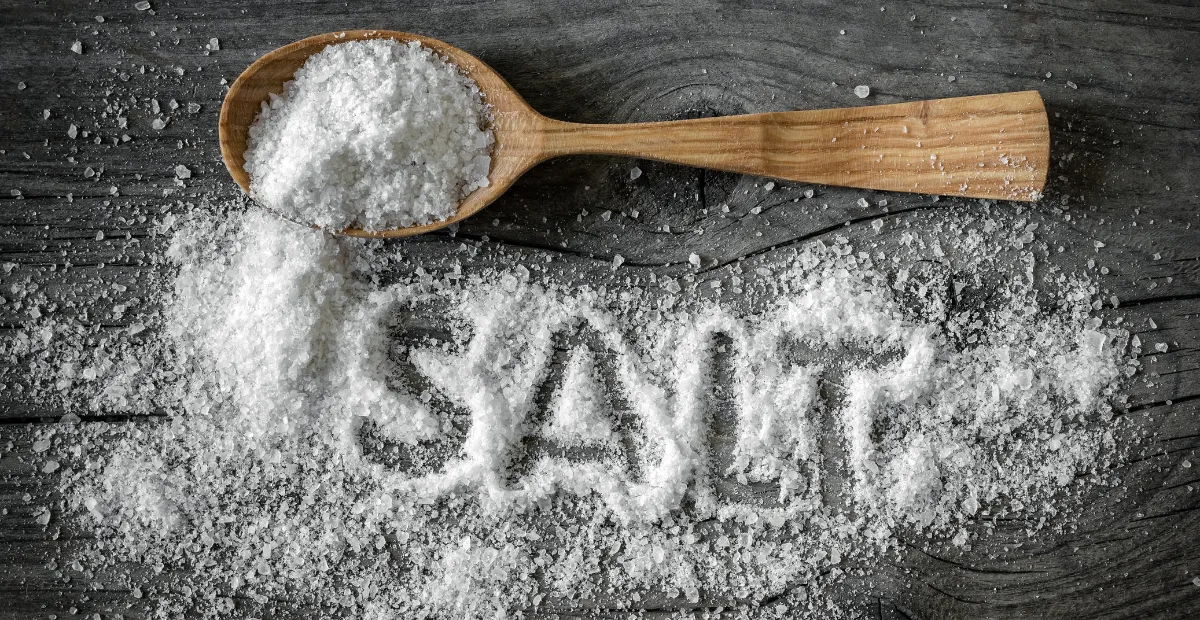
The Salty Truth: How to Choose Clean, Mineral-Rich Salt Without the Contaminants
It’s amazing how something as simple as salt can stir up so much confusion — and lately, it's been a hot topic in my Facebook group.
We’ve all heard that salt is bad for us… then we hear that salt is essential. We hear that sea salt is natural… then we read that it’s full of plastic. So what’s the truth?
Let me share what I’ve learned — not just from research, but from working with hundreds of families through my coaching practice. As a clean living expert, I’ve spent years digging into the fine print and testing claims most people overlook — especially when it comes to hidden toxins in common pantry staples.
When “Natural” Isn’t Clean
One of my clients — a mom who’s been on her clean living journey for years — once told me how airport security stopped her because of the Himalayan salt shaker in her carry-on. It tested positive for explosives.
It sounds wild, but here’s the thing: some Himalayan pink salts do contain trace residues of explosives because they’re mined with dynamite instead of being carefully hand-harvested. Those tiny residues can linger in the crystals. It’s a good reminder that even something as beautiful and mineral-rich as pink salt isn’t automatically clean.
And now, a major lawsuit has brought another popular salt into the spotlight:

Selina Naturally Celtic Salt — Contaminated With Lead
Recent findings revealed that Selina Naturally’s Celtic Sea Salt may be heavily contaminated with lead. Many people — thinking they were making a healthy choice — were unknowingly consuming one of the most dangerous heavy metals.
This didn’t surprise me. I’ve never recommended gray Celtic salt in my programs or group because it’s one of the most likely salts to contain heavy metals.
Why? Because many mineral-rich salts are harvested from environments with contaminated soil or water. The very minerals that make salt "nutrient dense" can also bring along heavy metals. And let’s not forget — sea salts are also increasingly contaminated with microplastics.
So Is Salt Still Good For You?
Yes. Absolutely.
Your body needs salt. But not the highly processed, bleached, stripped kind like Morton’s table salt. That’s basically pure sodium chloride with synthetic iodine and anti-caking agents.
What your body actually needs is mineral-rich, unrefined salt — the kind that contains trace minerals like magnesium, potassium, and calcium. These minerals help balance your electrolytes, support adrenal health, and promote cellular hydration.
But here’s the catch — even unrefined salt can come with issues.
What Most People Miss About Salt Testing
I get this question all the time: "But the company shares their lab results — doesn’t that mean it’s clean?"
Not necessarily.

Many salt companies share test results that look reassuring at first glance — but their thresholds for heavy metals are set incredibly high.
Unless you’re trained to interpret those reports (which most consumers aren’t), the data can be misleading. That’s where I come in.
As a clean living expert, I don’t just look for test results — I interpret them. I look at the sourcing, the harvesting method, the environmental context, and the allowable limits that many brands quietly accept. This is the level of scrutiny you deserve when choosing what goes into your body every day.
How to Choose the Right Salt
Here’s what I recommend to my clients:
✅ Look for salts from transparent companies that provide detailed sourcing information. Not just test results — but context.
✅ Avoid gray salts, especially from coastal regions where heavy metal contamination is common.
✅ Be selective with Himalayan salt, and only choose sources that disclose their mining practices and batch testing.
✅ Rotate your salts. Even the cleanest salt can carry trace contaminants. Rotating reduces the risk of long-term buildup and gives your body a broader mineral spectrum.
What I Use In My Own Kitchen
In my home, we use different salts for different purposes:
One for cooking
Another for seasoning at the table
A third for garnishing raw dishes like salads or avocado toast
I’ve curated a selection of clean salts in my Amazon shop — the exact ones I rotate in my own kitchen. These salts are:
✅ Mineral-rich
✅ Tested for purity (beyond just a flashy certificate)
✅ Free from microplastics and unnecessary additives
👉 https://cleanlivingcoaching.com/amazon-pantry
Final Thoughts
Salt should nourish your body, not stress it.
With all the greenwashing and confusion out there, it’s easy to think a label like “natural” or “mineral-rich” is enough. But the truth is, even clean-looking salts can carry toxic baggage — and unless you know how to decode the details, you might be getting more than you bargained for.
I hope this post brings clarity to a topic that’s often overlooked — and helps you feel more confident in the choices you’re making.
Your body needs minerals. Just make sure you’re choosing them wisely.
Here’s to mineral magic — without the lead. ✨🧂
